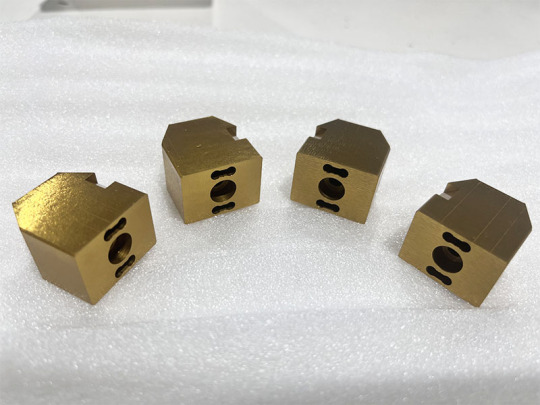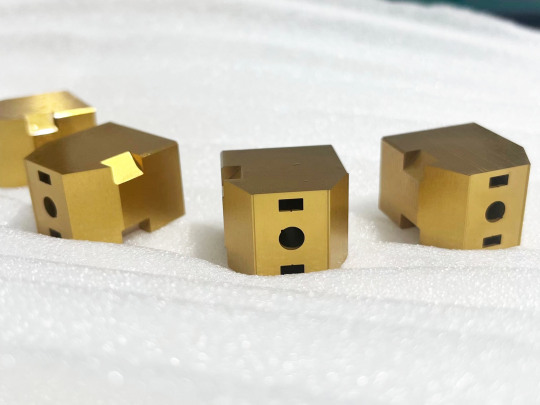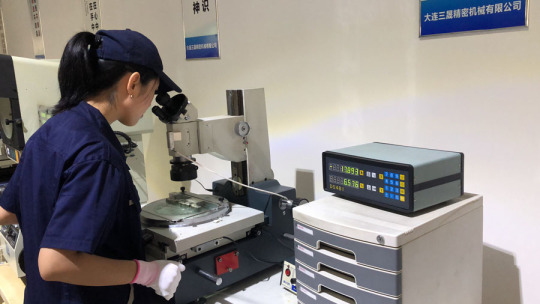Text
Understanding Anodizing: Type II vs. Type III
Anodizing is a surface treatment process that imparts a range of benefits to metal, most commonly aluminum. This electrochemical process not only enhances the aesthetic appeal of the metal but also provides several functional advantages.
Two prominent types of anodizing, known as Type II and Type III anodizing, offer distinct properties and applications.
Type II Anodizing: The Essentials
Type II anodizing, often referred to as conventional or sulfuric anodizing, is a widely employed method for aluminum finishing. This process involves immersing the aluminum in a sulfuric acid bath and applying an electrical current. The result is the growth of an oxide layer on the metal surface. Key characteristics of Type II anodizing include:
Thickness of Oxide Layer:
The oxide layer formed in Type II anodizing is relatively thin, typically ranging from 0.0001 to 0.001 inches.
Color Options:
Type II anodizing offers a variety of color options, making it suitable for decorative applications. Dyes can be introduced during the process to achieve different colors.
0 notes
Text
In modern manufacturing, the demand for high-precision components is steadily increasing. These components find extensive applications in aerospace, medical devices, semiconductor manufacturing, automotive industries, and various other fields, demanding exceptionally precise manufacturing processes. High-precision components are often complex mechanical parts, necessitating highly accurate machining processes and stringent quality control standards. However, due to shrinking sizes and increasingly stringent specifications, even minor defects can potentially lead to system failures. Therefore, timely and accurate detection of these components is of paramount importance, and optical microscopes play a crucial role in this process.
0 notes
Text


custom machined parts
1 note
·
View note
Text
How To Select Suitable Materials For CNC Machined Parts?
There are many materials suitable for CNC machining, and finding the right material for the product is constrained by various factors. Choosing the right material is crucial for the performance, accuracy, and durability of the part. Different environments and application scenarios require different types of materials. When selecting mechanical component materials, the following aspects can be considered.
0 notes
Text
Custom Precision Parts Machining: The Frontline Revolution Of Smart Manufacturing
Precision parts machining stands as a crucial component within the realm of smart manufacturing, directly influencing the performance and lifespan of a wide array of products. This article delves into the profound impact of custom precision parts machining on the smart manufacturing sector and the transformative changes it brings about.
0 notes
Text
The Design Guidelines To Prevent Precision Machinery Parts From Losing Their Work Capability
Precision mechanical parts may fail to operate normally during operation due to various reasons, which directly affects the performance and reliability of the mechanical device. These abnormalities include fracture, excessive deformation, wear, and surface fatigue. In order to ensure the normal operation of parts, a series of work capacity criteria or design criteria have been developed, which serve as the basic guiding principles for the design of precision mechanical parts, aiming to ensure the stable operation and service life of the parts.
1. Strength Criteria:
This is an important criterion to ensure that parts do not break during the working process. The strength requirements of parts must meet the various forces, pressures, and loads they are subjected to, as well as the possible impacts and vibrations that may occur. Strength calculations need to consider the mechanical properties and stress distribution of the material to ensure that the parts will not break under normal operating conditions.
0 notes
Text
DC53 Stainless Steel Parts With titanium Coating
0 notes
Text
Characteristics Of Mechanical Parts Machining
Mechanical parts machining is a crucial process in the manufacturing field, and its characteristics impact various aspects such as product quality, production efficiency, and cost control. This article will delve into the characteristics of mechanical parts machining, analyzing aspects ranging from material selection, processing techniques, precision requirements, to the degree of automation.
Diverse Material Selection:
Mechanical parts machining involves a wide variety of materials, including metals, plastics, ceramics, and more. Different materials possess distinct physical properties and mechanical performances during processing. As a result, the processing techniques need to be adjusted based on the specific characteristics of each material to ensure the quality and performance of the final product.
0 notes
Text
Inspection Of Machined Mechanical Parts
The machining of mechanical parts is a crucial step in the manufacturing process, and the quality and precision of these parts directly impact the performance and reliability of the final product. To ensure the quality of machined mechanical parts, strict inspection and testing must be conducted. This article focuses on the post-machining inspection process and its significance.
Purpose and Importance of Inspection
The purpose of inspecting machined mechanical parts is to verify whether their dimensional accuracy, shape precision, surface quality, and other attributes comply with design requirements and technical standards. Through inspection, errors and issues that may have occurred during the machining process can be promptly identified and appropriate measures taken to correct them, thus ensuring that the quality and precision of the parts meet design specifications.
Ensuring Product Quality:
Inspection ensures that the dimensions and shape precision of the mechanical parts meet design requirements, thereby guaranteeing the performance and quality of the final product.
Enhancing Machining Precision:
By identifying errors and issues during inspection, adjustments and improvements can be made to the machining process in a timely manner, leading to higher machining precision.
Reducing Costs:
Timely detection and correction of machining issues help avoid the waste and rework caused by non-compliant parts, leading to cost reduction.
Ensuring Safety:
In critical components and high-risk applications, the dimensional and shape precision of parts are vital for safety and reliability. Inspection safeguards product safety.

Inspection Methods and Tools
When conducting post-machining inspection of mechanical parts, there are various methods and tools available to ensure the quality and precision of the parts. Below are some common inspection methods and tools:
Inspection Tools
Gauge Inspection: Using various measuring tools such as calipers, micrometers, and dial indicators to measure the dimensions of the parts and verify their accuracy.
0 notes
Text

High Precision Machined Parts
1 note
·
View note